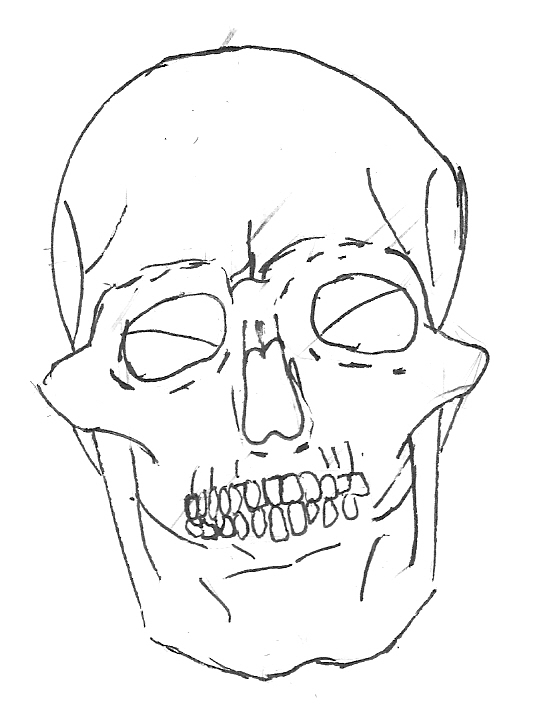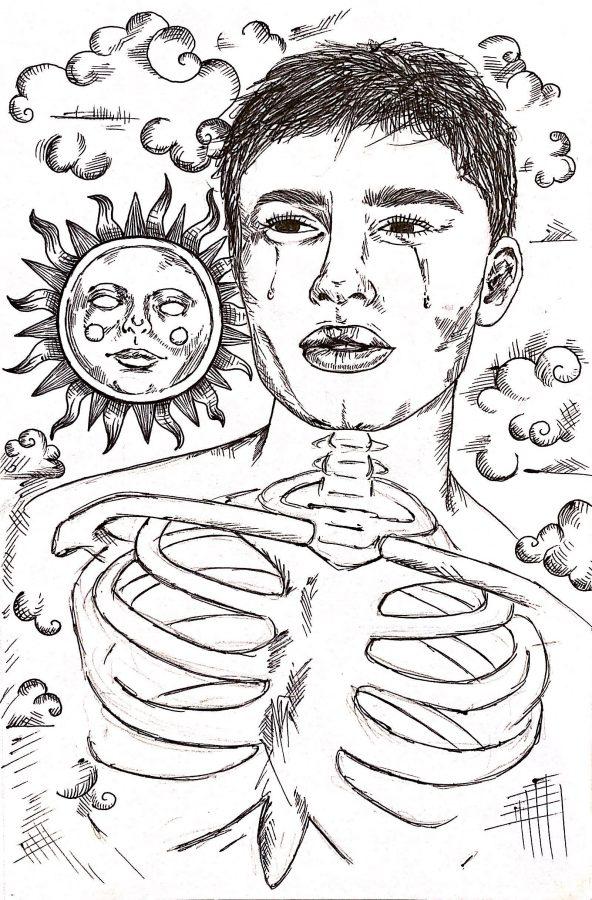By MILES HUNTLEY-FENNER
Student Contributor
Writer’s Note – This short story takes place in a fictional world with imagined continents, peoples, and cultures that are inspired by, but are not to be confused with those of Earth.
Preface – This story is a description of Pölish efforts to create biological and chemical weapons of mass destruction for use in future imperial conquests. It does not subscribe to traditional narrative structure, as its primary purpose is to provide an account of the facilities and practices used to realize Pöland’s ambitions. It lacks a central message and relatable characters, as they would be irrelevant to the story’s lack of meaning. This work contains disturbing material, and I would advise discretion to all potential readers.
I would like to dedicate this story to the victims of Unit 731, a Japanese human experimentation facility that operated during World War II and perpetrated horrific atrocities similar to those described below. The men responsible were given immunity by the United States, and went on to have long, successful careers in medicine after the war. You can read about Unit 731 and other unethical Japanese Wartime experiments here: https://www.archives.gov/files/iwg/japanese-war-crimes/select-documents.pdf
It was almost midnight when Dr. Mordis hanged himself in his bedroom. He left no suicide note, but when he was discovered the following day, there was little doubt about what had motivated his final act. His activities as a head researcher at Unit 317 had weighed on him since his arrival at the facility months ago, and caused him considerable guilt. With nobody and nothing to turn to, he alleviated his anguish by taking his own life.
Dr. Mordis’ suicide could not have come at a worse time for Surgeon General Malberg Cartwright. After years of work, the Pölish Finance Committee (PFC) had finally agreed to fund his vision: a network of state of the art medical research centers for the development of weaponized biological and chemical agents. Unit 317 was just the beginning, but the suicide of a key researcher of the young weapons program would no doubt cripple the morale of other medical practitioners at the unit. Cartwright contemplated these facts in the backseat of his luxurious Auten 770 as his chauffeur passed through the final checkpoint of Unit 317 and drove toward the headquarters at the heart of the facility. Cartwright was not concerned about the effects the suicide might have on the continued funding of his program (bribery and nepotism had ensured its longevity), but was instead troubled by the reduced pace and quality of research that had ensued following Dr. Mordis’ death. He had devoted too much and ventured too far to let a mere suicide hinder his aspirations. He had come for a personal inspection of his facility to ensure its continued smooth operation.
As the car approached Unit Headquarters, the senior staff members filed through the front entrance and stood at attention near the driveway. Cartwright left the car and began to stiffly salute them, but then thought better of it. Instead, he forced a smile and strolled down the line, personally shaking each subordinate’s hand. Normally, the General would never commit such a breach of formal propriety, but under the circumstances he thought it necessary in order to leave a good impression with the staff. When he reached Lieutenant Lawrence, the second in command of the Unit, Cartwright gave a firm handshake and remarked at the fortune of being reunited after so many years. Lawrence responded with a quip about the General’s weight gain since medical school. This blunder infuriated Cartwright. The Lieutenant had disrespected him in front of all of the senior staff, many of whom were meeting him for the first time, and undermined his authority. Outwardly, however, he remained calm and responded with a threat of demotion laced with sarcasm. This intimidation was lost on Lawrence, who offered a brief chuckle in response. After greeting the rest of his subordinates, Cartwright dismissed all but Lawrence, whom he briefly conversed with about both of their personal lives before arriving at the primary reason for his visit, an inspection of the facility.
Lawrence led Cartwright through the main entrance and into a stone courtyard. From there, the pair made a left, and entered the prisoner containment wing. The Lieutenant guided the General through the process of sorting the prisoners. Initially, ‘units’ , who usually consisted of Wüstern and Rubidian civilians or POWs, would be led to an assembly area. Medical staff would then disinfect the group before evaluating and recording each unit’s physical condition. They would then separate the units based on age, gender, race, and physical health to be stored in group enclosures.
As the Lieutenant was explaining this to Cartwright, the two came across a great commotion, as three physicians had opened one of the female enclosures and were searching through its hysterical occupants for a ‘good looking’ unit to gang rape. The General interrupted Lawrence’s explanation and began to rebuke the petrified physicians. Lawrence interjected in defense of the men, and explained the nature of rape in Unit 317. The doctors and guards regularly raped prisoners in their spare time. The Lieutenant had permitted this to continue unchecked, seeing it as an effective means of degrading and dehumanizing the units. Cartwright dismissed these arguments, and explained his ‘scientific’ disapproval of miscegenation. The General vowed to bring some ‘pure Pölish whores’ from the mainland for the Unit, but until then he begrudgingly agreed to allow the rape to continue. Having reached an agreement, Lawrence and Cartwright carried on with the tour and left the physicians to their sorting.
The Lieutenant continued his explanation of how prisoners were hand-selected from the masses for experiments and then taken to the Clean Cells, a complex of sterile isolation units for storage of ongoing biological tests, situated adjacent to the main experimentation wing. As the pair moved through the storage facility, the General peered into some of the cells. In one, a pair of doctors was conducting an experiment on a middle aged Lenoan man involving small, daily injections of a highly virulent strain of cultivated Cholera, which the researchers hoped to weaponize. One of the doctors produced a syringe and injected the Cholera solution, while his counterpart told the unit that the injection contained medicine to treat his Cholera-induced diarrhea. Several more men, women, and children in nearby cells were being subjected to similar experimentation. Many of them suspected the true nature of the injections, but were too weak and dejected to resist. In one cell, a deleterious unit writhed and moaned at the approach of his attending physicians, who casually sedated him with chloroform and injected him like the rest. There was no control group in this study. Further on, two Unit staff members lifted a barely conscious Lenoan prisoner onto a stretcher and carried him away for dissection, even as he lay dying.
The two left this morbid attraction and proceeded on to the refrigeration and depressurization chambers provided by the Army and Air Force respectively. Lawrence gave a candid description of the machines, and added on a side note that they were fun to use. Cartwright then received a demonstration of the freezing machine, as a physician proceeded to freeze a Rubidian woman’s left forearm for a gangrene study. After securing the unit in place, the physician activated the machine and observed the freezing process through a porthole while timing with a stopwatch. When he had visually confirmed that the freezing was complete, the researcher stopped timing, deactivated the machine, and removed the woman’s restraints. He then dragged away the dazed unit to thaw her dead forearm and allow it to rot. Cartwright received no such demonstration of the depressurization chamber, but was already well aware of its purpose of studying the potential effects of high altitude flight on pilots. Lawrence began to explain this, but the General interjected and prompted his guide to continue.
They then proceeded to the observation room for the Contained Chemical Agent Testing Chamber – an airtight enclosure for chemical weapons testing. The Lieutenant proudly described a recent successful test of experimental nerve gas, a revolutionary concoction that caused death by asphyxiation. Dr. Mordis had worked extensively on the chemical agent on prior to his death.
Lawrence then led Cartwright to an observation platform overlooking an operating room, where researchers were dissecting a male toddler who had succumbed to Septicemic Plague (a virulent disease that the General considered his most promising potential biological weapon agent). His operators were storing key organs and taking samples for further study. In the middle of this savage autopsy, one of the doctors declared that he needed a break and proceeded to throw down his instruments and storm out of the room. After extracting the man’s name from his colleagues, Cartwright ordered the Lieutenant to take note of the doctor, and transfer him to the Southern Front (Rubidia) at the next available opportunity. The General made a mental note to bolster psychological screening for potential staff in the future.
In the next room, a researcher was educating a handful of trainees. They too had the potential to one-day lead students through this, or other laboratories if they lasted long enough. The researcher had strapped the dying Lenoan unit from clean cells to an operating table, and was lecturing his students in preparation for a live demonstration. As Cartwright and Lawrence entered, the doctor greeted them enthusiastically, and invited them to watch his presentation along with the trainees. The General agreed, and introduced himself to the unfamiliar students before allowing the demonstration to continue.
After finishing his lecture, the group descended on the poor unit with their scalpels, and proceeded to dissect him alive. The unit squirmed and groaned at first, but soon fell silent as three trainees conducted a mock tracheotomy. Meanwhile, three more surgeons and their overseer clustered around the man’s abdomen took organ samples for storage in formaldehyde. Two others practiced amputations on the man’s legs.
When the vivisection was finished, the men killed what was left of the man via lethal injection. Several menial staff members then cleaned the operating table and carted the unit’s remains away in a large bin. Lawrence used this opportunity to show Cartwright the Waste Disposal Department. The two tagged along with the clean up crew and arrived at the disposal center. The staff placed the bin alongside others like it, and moments later a soot-covered man took it away to the crematorium, a recent addition to the complex. Lawrence explained how before the installation of the crematorium, Unit staff would dump the bodies into a large pit, and burn their remains once a week. The installation of the crematorium had streamlined the process of body disposal in addition to the rest of unit operations, which now had additional staff who would otherwise be devoted to managing ‘the pit’, which was always difficult to burn and required extensive fuel.
At this point, Cartwright remarked at the time and suggested that they continue the tour on the following day. Lawrence happily agreed, and after eating a mediocre meal in the facility mess, the two parted ways for their separate accommodations. Cartwright spent the rest of the evening recording his observations from the tour and plotting changes to the facility. Overall, he was relieved at the progress that Unit 317 had made in spite of Dr. Mordis’ death. Though rough around the edges, with some minor changes, perhaps even a replacement for Lawrence, the General foresaw great success for his creation.
Categories:
The Inspection
December 14, 2017
0
Donate to Sword & Shield
$180
$1000
Contributed
Our Goal
Your donation will support the student journalists of University High School. Your contribution will allow us to purchase equipment and cover our annual website hosting costs.




